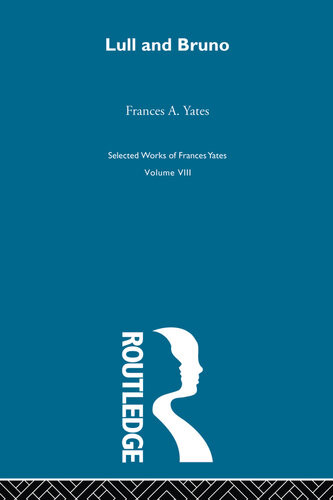

Most ebook files are in PDF format, so you can easily read them using various software such as Foxit Reader or directly on the Google Chrome browser.
Some ebook files are released by publishers in other formats such as .awz, .mobi, .epub, .fb2, etc. You may need to install specific software to read these formats on mobile/PC, such as Calibre.
Please read the tutorial at this link: https://ebookbell.com/faq
We offer FREE conversion to the popular formats you request; however, this may take some time. Therefore, right after payment, please email us, and we will try to provide the service as quickly as possible.
For some exceptional file formats or broken links (if any), please refrain from opening any disputes. Instead, email us first, and we will try to assist within a maximum of 6 hours.
EbookBell Team

4.3
28 reviewsThe studies reprinted here demonstrate not only the range of their author’s learning but her determination to go to the root of a problem. In order to understand the thought of Giordano Bruno, Dame Frances found it necessary to investigate the role of Lullism in the Renaissance and this led her back three centuries to the origins of the Art of Ramon Lull. The first two articles in this volume took her into a region of European thought that, in the 1950s, was virtually unknown to scholars outside Spain. The fact that the Lullian Art and philosophy were at the heart of all Lull’s writings had been perceived by very few scholars. It is characteristic of Dame Frances that she set out, undaunted by the lack of guides, to explore the ‘huge unclimbed mountain’ of Lullian thought.
The first article here, by its discovery of the cosmological basis of Lull’s philosophy, especially his elemental theory, placed him squarely in an intelligible intellectual tradition. Not satisfied with having thus ‘re-opened the problem of Lull and his Art’, Dame Frances went on (in the second article here) to suggest a source for the Art’s most striking feature, the connexion between the divine attributes and the elemental theory. This she found in the great Irish philosopher of the ninth century, John Scotus Erigena. The revelation that Lull not only drew on the general Neoplatonic tradition but on the mystical version of Neoplatonism represented by Erigena goes far to explain his attraction for such Renaissance thinkers as Giordano Bruno, in whom Neoplatonic ideas are combined with Hermeticism and Cabalism. Dame Frances has acknowledged that writing her two articles on Lull was ‘the hardest task I have ever undertaken’. The task proved worthwhile. Erigena, Lull and Bruno, often viewed as isolated figures in the history of ideas, were illuminated anew by being seen as linked in a Coherent line of development.